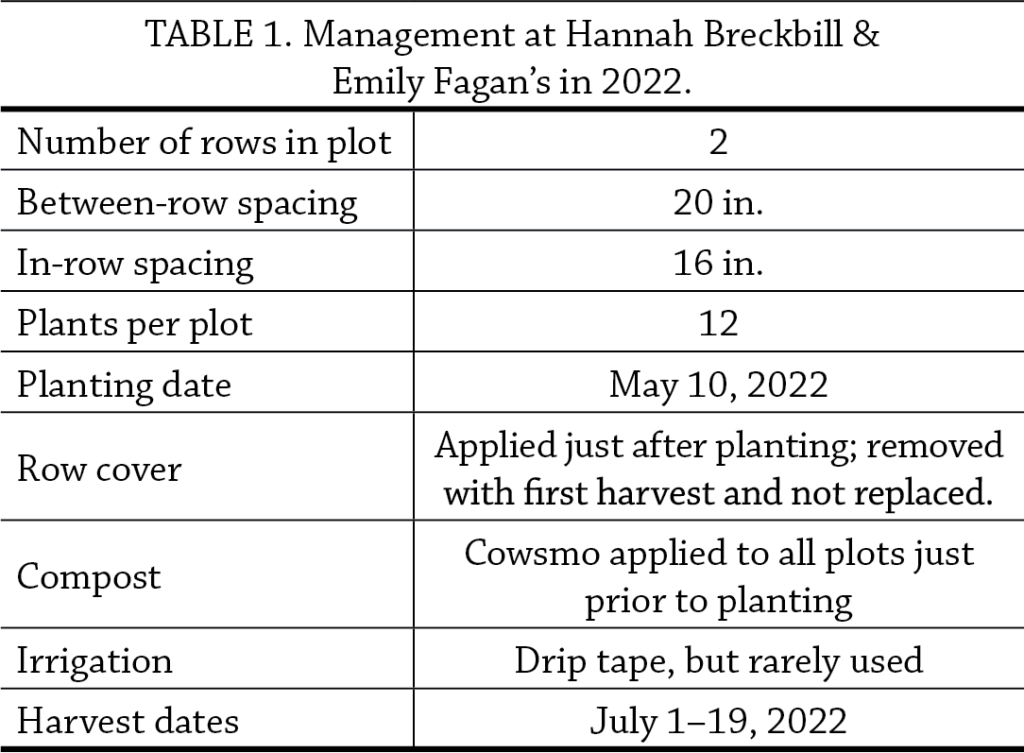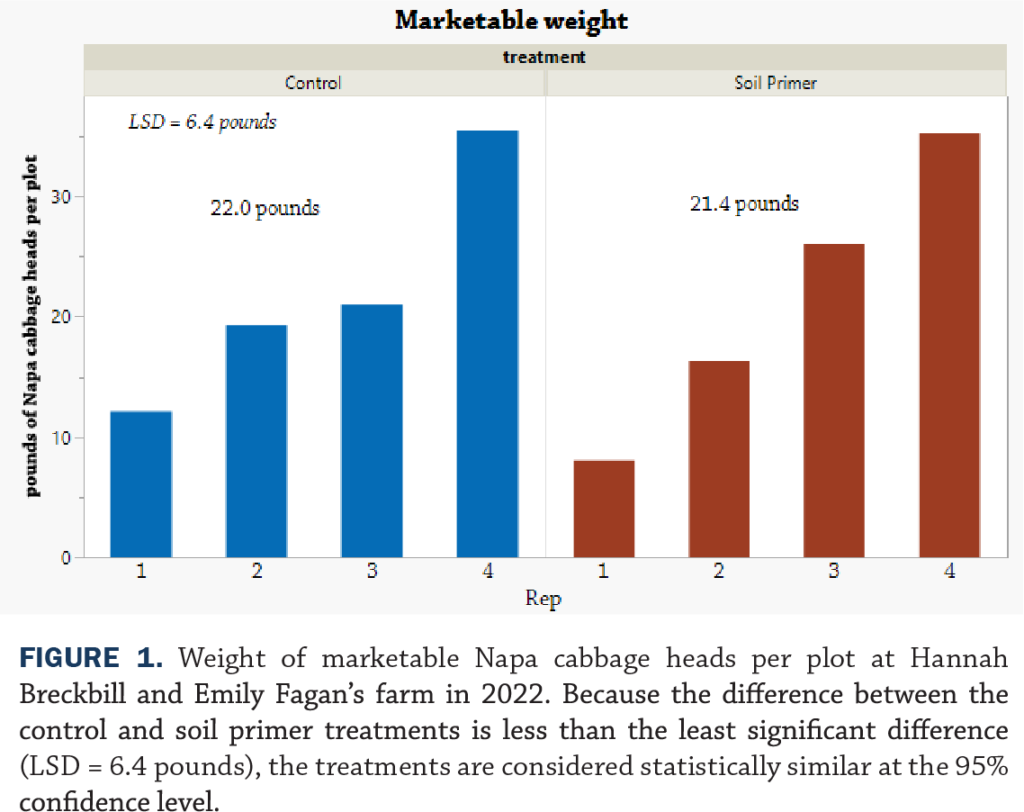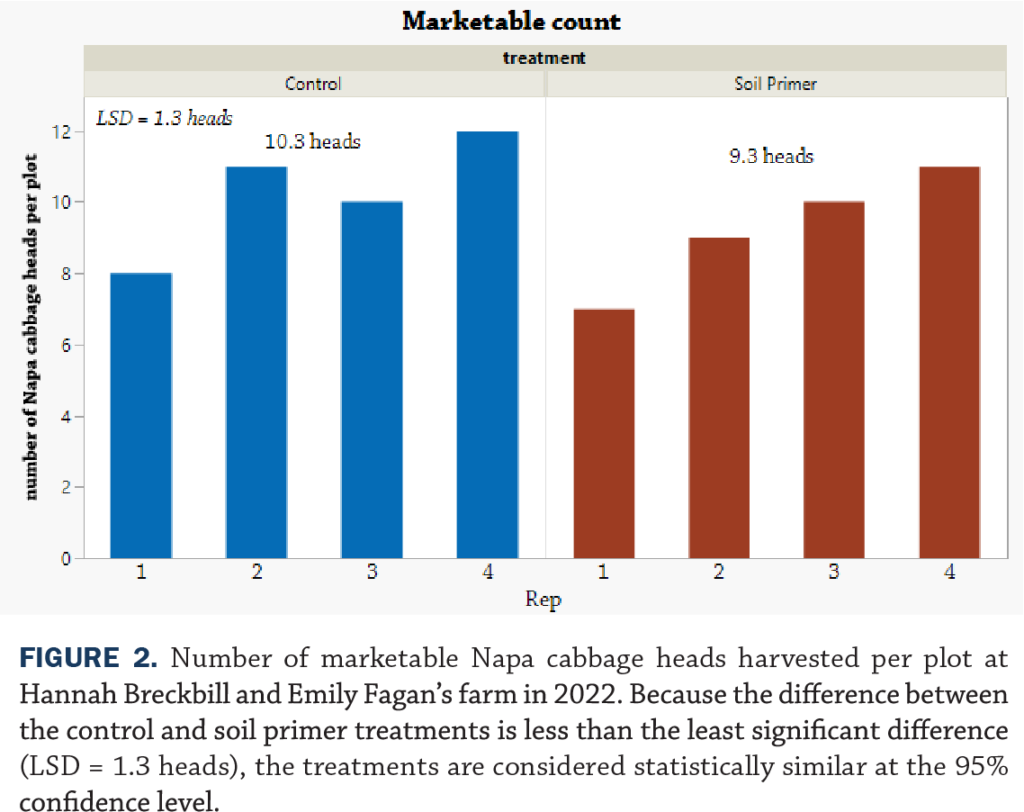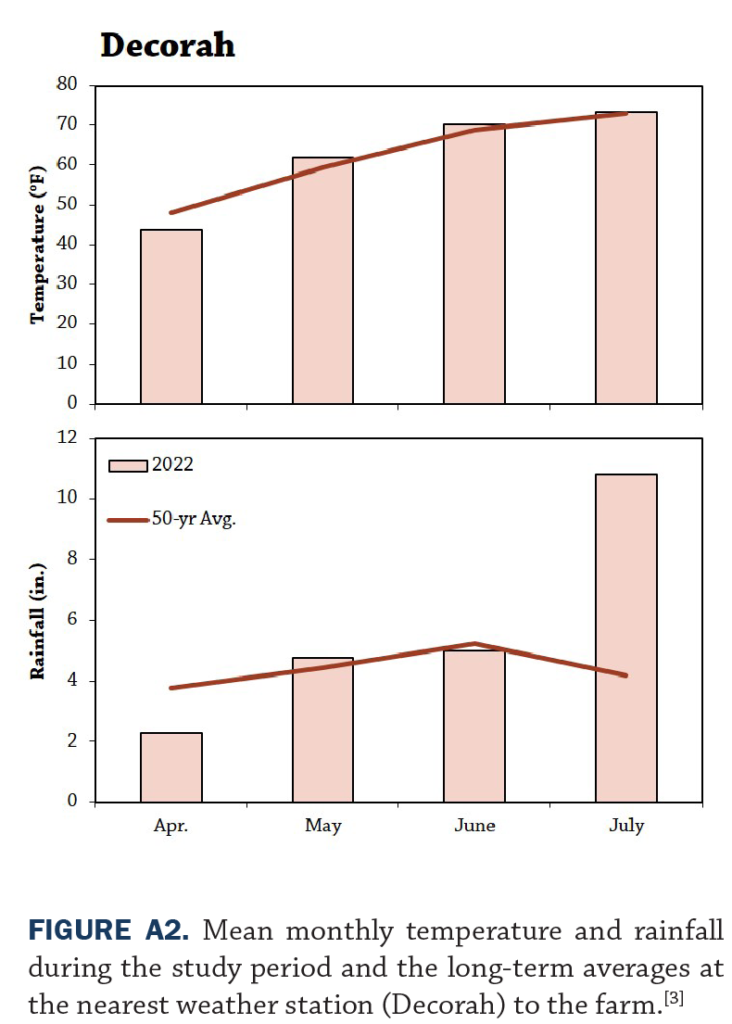This research was funded by Ceres Trust.
In a Nutshell:
- Hannah Breckbill and Emily Fagan of Humble Hands Harvest wondered if a soil primer (Rejuvenate) could improve the productivity of Napa cabbage. They also wondered if the soil primer would improve Napa cabbage’s tolerance to pests – does a healthier, less stressed plant suffer less damage from aphids?
- Breckbill and Fagan assessed Napa cabbage productivity from plots that either received the soil primer or did not (control).
Key Findings:
- Napa cabbage yield was not improved by the soil primer. The amount of Napa cabbage, in terms of both weight and number of heads harvested, was similar between the soil primer and control plots.
- According to Breckbill, “The aphids didn’t show up this year!” So no assessments of pest pressure or damage could be made.
Background
The use of row covers in the production of brassica crops like Napa cabbage provides effective protection from flea beetles, but the practice can worsen aphid outbreaks – if aphids manage to get under the row cover, their populations, and damage they cause, can surge.[1] This presents a bit of a conundrum because maintaining coverage with row cover is a major tactic deployed to prevent insect pests from accessing crops. Some evidence suggests that stressed plants are more vulnerable to damage from aphids than healthy plants. The objective of this trial was to study the effect of a product (Rejuvenate by Advancing Eco Agriculture, LLC[2]) that claims to activate soil biology and nutrient cycling to minimize plant stress and increase crop yield. In Breckbill and Fagan’s case, for Napa cabbage.

Hannah Breckbill calculates the amount of Rejuvenate soil primer needed for their Napa cabbage plots. Photo taken Apr. 28, 2022.
Methods
Design
Breckbill and Fagan transplanted Napa cabbage in mid-May and compared two treatments:
- Soil primer: Rejuvenate spray-applied immediately after transplanting.
- Control: no product applied.
Breckbill and Fagan implements four replications of the two treatments (Figure A1) in plots measuring 2.5 ft by 8 ft. Field management is presented in Table 1.
Measurements
Breckbill and Fagan began harvesting Napa cabbage on July 1, 2022; the final harvest occurred on July 19. On each harvest date, they documented the weight and number of marketable heads harvested from each plot. Total weight and total number of marketable heads harvested from each plot during the harvest period (July 1–19) were used in the analysis. From these values we also calculated the average weight of an individual marketable head.
Data analysis
To evaluate the effect of the soil primer on Napa cabbage, we calculated the least significant difference (LSD) at the 95% confidence level using a t-test. If the difference between any two of the treatments was greater than the LSD, we would expect such a difference to occur 95 times out of 100 under the same conditions – we refer to this as a statistically significant effect. On the other hand, if the resulting difference between any two treatments was less than the LSD, we would consider the results to be statistically similar. We could make these statistical calculations because Breckbill and Fagan’s experimental design involved replication of the treatments (Figure A1).
Results and Discussion
There were no statistical differences in weight or count of marketable heads harvested (Figures 1 and 2) between the two treatments. Likewise, head weight was similar between the two treatments (Figure 3). In other words, control plots performed just as well as those receiving the soil primer. Breckbill noted that replications 1 and 2 yielded far less than replications 3 and 4: “We had a lot of thistle pressure in reps 1 and 2 that didn’t get addressed quickly, which impacted yield.”
Conclusions and Next Steps
Going into this trial, Breckbill and Fagan were most interested to see if the soil primer (Rejuvenate) could help reduce aphid damage to Napa cabbage by producing healthier plants. As can happen when trying to study insect pests, aphid pressure turned out to be nonexistent at the farm this year so Breckbill and Fagan still wonder about the soil primer’s utility for Napa cabbage and on their farm in general. From a yield standpoint, the soil primer did not improve Napa cabbage productivity. “I want to keep trying this fertility regimen to see if it helps other crops in other circumstances,” Breckbill said. With crop pests on the mind, albeit weeds rather than insects, Breckbill considered the thistles they observed in replications 1 and 2 and added, “Also, I’m curious what the soil primer does to the thistle pressure.”
Appendix – Trial Design and Weather Conditions
References
- Bessin, R. 2019. Row Covers for Insect Management. University of Kentucky Ag Extension. https://entomology.ca.uky.edu/ef322 (accessed October 2022).
- Advancing Eco Agriculture. 2022. Rejuvenate TM nutrition to strengthen the soil microbial community. https://storage.googleapis.com/website-regulatory-data/Product Briefs/Rejuvenate Brief.pdf (accessed October 2022).
- Iowa Environmental Mesonet. 2022. Climodat Reports. Iowa State University. http://mesonet.agron.iastate.edu/climodat/ (accessed October 2022).







